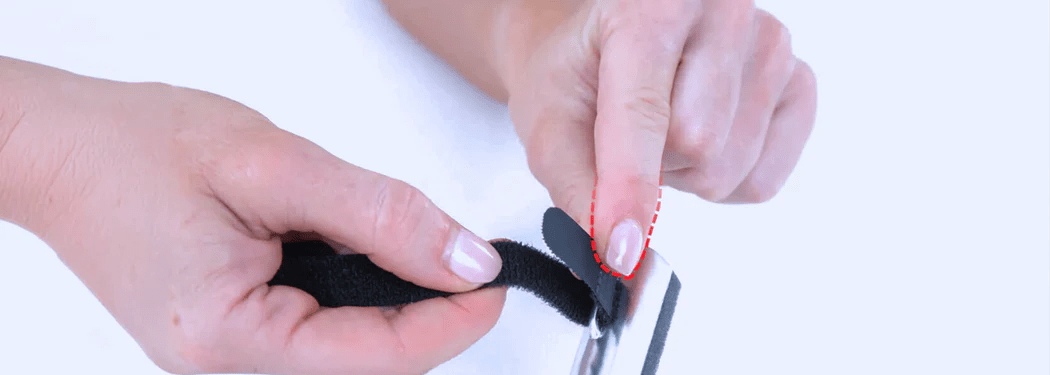Mallet Finger Overview
Mallet finger occurs when the tendon responsible for straightening the finger is damaged, leading to a deformity. When suffering from mallet finger, pain is often experienced, while others feel no pain at all. Treatments for a mallet finger can be as minimal as using a splint, or as serious as surgery. In this injury guide, you’ll learn how to identify mallet finger and different mallet finger treatments.
What is Mallet Finger?
Also known as “baseball finger,” this condition is defined as a deformity in the finger that prevents you from straightening the tip of it (known as the distal interphalangeal joint or DIP joint). The tendon responsible for straightening the end of the finger or thumb becomes damaged, causing the tip of the finger joint to rest in a bent position (flexion).
The extensor tendon is in charge of straightening the fingers and thumbs. In a mallet finger injury, the force of a blow hitting the tip of the finger causes the tendon to tear. The tendon may rupture or pull, causing a lot of pain.
The middle three fingers on the dominant hand are the most likely to suffer from a mallet injury, often from sports or other physical activities.
Mallet Finger vs. Trigger Finger
The two are often confused with one another, as they both involve not being able to straighten out the finger. Let’s look at their differences:
Trigger Finger
This is caused by inflammation of the sheath of the flexor tendons that bend the fingers, resulting in a locking or catching sensation. The entire finger can get “stuck” in a bent position, but can often be forced open with a pop.
Mallet Finger
This occurs when the finger is hit by an object, causing damage to the extensor tendon that extends the finger. This means that the tip of the finger remains flexible but is unable to actively extend itself at the tip (known as distal phalanx).
Additionally, you may wonder what the difference is with a swan neck deformity. The affected finger is injured connective tissue at the proximal interphalangeal joint (PIP)- aka the middle joint; resulting in a resting extension of this joint.
Mallet Finger Causes
Mallet finger is caused by damage to the extensor tendon, often caused by a severe impact. The most common mallet finger causes include:
Athletic Injury
Quite possibly the most common cause of a mallet finger deformity, any sport involving a ball puts you at risk of injury. Basketball, football, volleyball, and baseball players often experience mallet finger.
Work Injury
Physical labor, often in the form of warehouse work or construction, can result in a mallet finger injury. A crushing accident experienced on the job can severely injure the finger, making recovery quite difficult.
Mallet Finger Classification
There are four different types of injuries that can occur.
- Type 1: The tendon is damaged with none to minimal injury to the bone and no open wound
- Type 2: A small fracture (known as an avulsion fracture) and a ruptured tendon caused by the injury with an open wound
- Type 3: A deep wound that involves significant tendon damage or even bone fragments (piece of bone)
- Type 4: A large fracture and a ruptured tendon, known as bony mallet finger or mallet fracture, resulting in a deformity of the finger
Mallet Finger Symptoms
- Common symptoms associated with mallet finger include the following:
- Redness
- Swelling
- Tenderness
- Bruising
- Pain
- Inability to straighten the top of the finger (a finger droop), unless helped by the other hand
While the condition is usually easily managed, there are a few troublesome symptoms to look out for. They include: - Detached nail from the nail bed
- Blood under the nail
- Severe pain or swelling
- Suspicion of a finger bone fracture
Mallet Finger Complications
Most extensor tendon injuries like mallet finger complications come in the form of treatment side effects. The tendon can completely heal itself and with proper treatment your finger could be back to normal within four to eight weeks. If surgery is necessary, recovery will take longer and often come with more initial swelling and discomfort.
When using a splint, you may experience sores on the skin. This is normal and can be fixed by ensuring a proper fit. Also, relying on pain medication can cause unwanted digestive issues. Thankfully, there isn’t anything long-term to worry about.
When to See a Doctor
Do not put off your doctor’s visit just because symptoms seem mild. As soon as you notice the condition, visit your doctor. They will determine if you need X-rays and whether or not to send you to an orthopedic or sports medicine hand surgeon. Chronic mallet finger–when the condition hasn’t healed with the help of a splint within 4 to 6 weeks–is likely to require surgery.
Mallet Finger Recovery
The estimated nonsurgical mallet finger recovery time is 4 to 6 weeks if you wear your splint full time. If you don’t wear it as recommended or are late seeking treatment, your tendon injury recovery time will be prolonged.
As for mallet finger recovery rate, it’s quite high. The majority of patients heal with a splint alone, but those who don’t find treatment through surgery.
How to Know When Mallet Finger Is Healed
Your injured finger will most likely be healed after four weeks if it’s a minor injury, or six weeks if there’s a small fracture. If swelling is present after taking off a splint or your finger is still deformed, it is still injured and you may even need to get another x-ray.
Once the pain subsides and your finger returns back to a normal resting position (not bent), it’s healed and ready to go.
Healing Your Mallet Finger is Effortless
Proper mallet finger repair doesn’t have to be hard. In fact, as long as you seek professional help from a doctor as soon as possible, your injury will heal quickly and without complications.
When an injury occurs, rest it at home with ice until you’re able to get to a doctor. They’ll usually prescribe you pain medication and give you a splint. Splinting is all you need to heal most cases of mallet finger. After your finger heals, it may be a bit more fragile than before and require a short bout of exercise guided by a physical therapist. Be cautious when playing sports or engaging in any other activity that could cause another injury.







